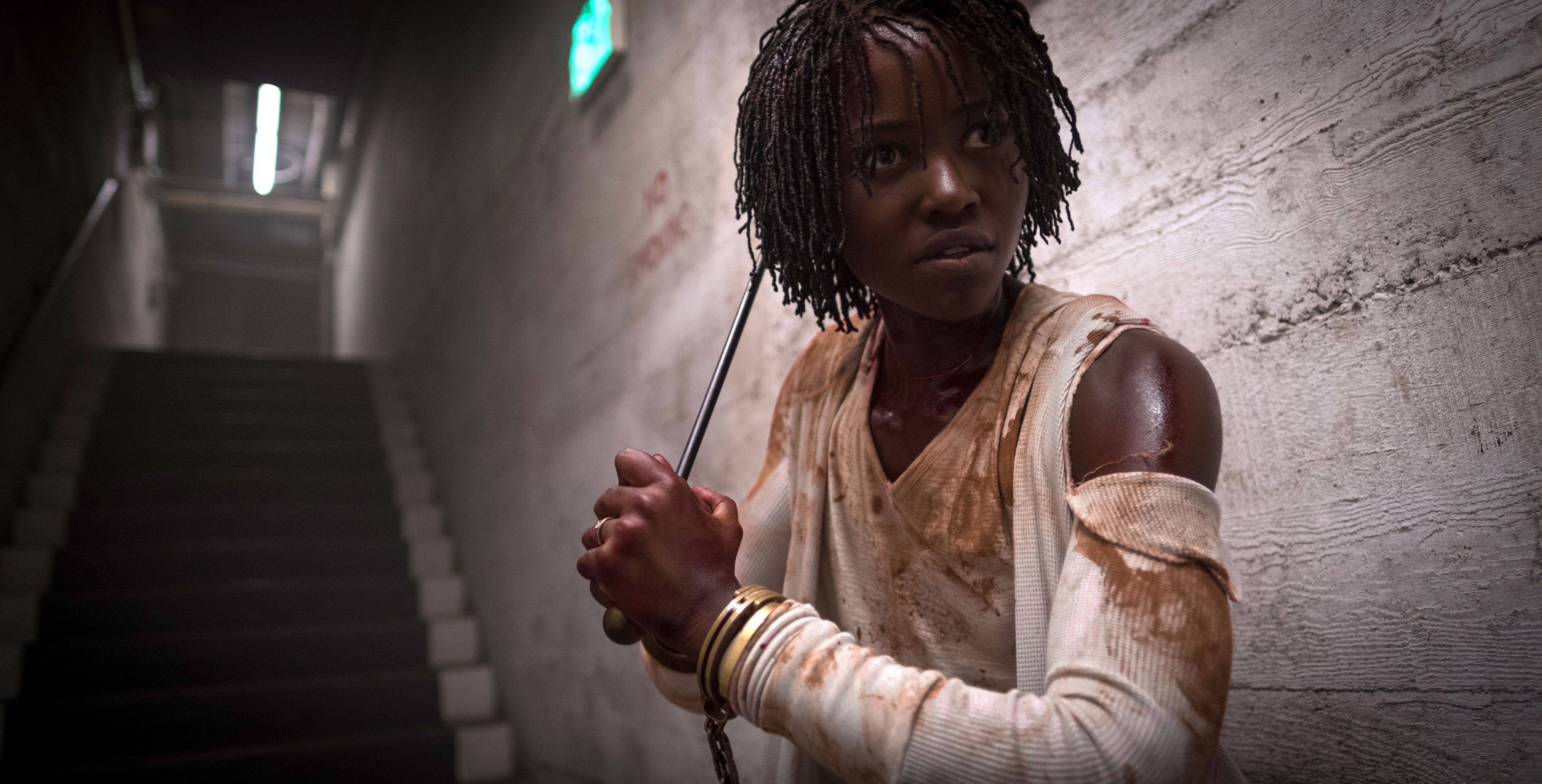It’s hard to reduce the ninety-plus minute feature film you’re writing to a unique, representative, and intriguing title without erring on the side of comic literality or over-descriptiveness. Yet some of the biggest movies of our lifetime have boldly kept themselves to an iconic three letters—JFK, UHF, not to mention the fact that when a film person says “her” we know it’s an italicized proper noun rather than an unspecified pronoun. It’s a bold marketing choice, to say the least.
Last weekend, Jordan Peele wide-released a film that takes this idea one step further: even though it just hit theaters, Us is already widely regarded as having a title comprised of only two letters. While ambiguity has always been a requisite for spooky titles, it’s usually in reference to a definitive ominous event (note: do you ever think about how much less scary The Thing or The Shining or The Amityville Horror would be if they were instead given the article “A” instead of “The”?). Us ventures into nearly uncharted territory with a title involving a definitive ominous objective pronoun for which the audience may or may not be implicated (who is “us”??).
But the two-character title has been done before, even beyond the two-letter pronoun that scared a bunch of people two years ago (see: #10). In fact, it goes back at least as far as the 1950s, when a Spanish surrealist was starting to realize the extent to which he loved dunking on the upper class (see: #6). If you’re looking to pregame Us with a ten-feature binge warming you up to a movie whose title tells you very little about what you’re about to see, you’ve come to the right place.
10. It (2017)
It seems like it would be difficult to make a horror feature that plays into absolutely none of the legitimate sociological anxieties that have influenced trends in the genre since the days of Mary Shelley and Ed Poe. But I can’t imagine the latest iteration of It was inspired by anything besides an actual fear of clowns.
9. Ed (1996)
Ed has been described by most who’ve seen it as being so-bad-it’s-good without actually really being good. Let me just say that this is not true; sure, it is a relentless anxiety attack about a monkey fucking up Matt LeBlanc’s apartment and farting a lot, and every imaginable mid-’90s comic cliché is not only represented but played to death. But there’s a subtle dark energy lining Bill Couturié’s (Letters Home from Vietnam) sophomore film, featuring an all-star cast including Jack Warden (From Here to Eternity, 12 Angry Men), Jim Caviezel (Passion of the Christ, Thin Red Line), and Bill Cobbs (Air Bud). When you think about it, aren’t all athletes just agency-less primates (“free agents”??) being bought and sold by three generations of insatiable capitalists?
8. XX (2017)
Where xXx (2002) was a testosterone-injected rap-rock take on the gentlemanly Bond franchise, XX is, conversely, a horror anthology in which three quarters of the stories are predicated on maternal nightmares, the title referencing each of the four directors’ chromosomes. Unfortunately, the film loses a lot of good grace for its spooky, ambiguous title due to Annie Clark’s segment, which she called The Birthday Party, or, The Memory Lucy Suppressed From Her Seventh Birthday That Wasn't Really Her Mom's Fault (Even Though Her Therapist Says It's Probably Why She Fears Intimacy).
7. Pi (1998)
Pi ushered in an entire decade of tedious movies made by white guys about white guys with headaches and anxieties you couldn't possibly understand. For that, I hate it; but for its reverence for Tetsuo and breakbeat, I’ll give it a pass.
6. Él (1953)
In terms of experimentalism, Luis Buñuel’s naming his movie “Him” barely scratches the surface of a career built upon collaborations with Dalí and a film where the female lead is inexplicably played by two completely different-looking actresses.
5. if... (1968)
In short, if….’s rebellious ’60s spirit and surrealist stylistic choices inspiring Clockwork Orange have undoubtedly aged well; its subject matter? Not so much.
4. Up (2009)
I saw Up in theaters with my whole family when it came out. We wound up sitting next to a family I’d gone to grade school with. It was very strange crying in the dark with my whole family and a family I’d gone to grade school with.
3. No (2012)
I’ve seen No twice, and the storyline is still pretty fuzzy to me beyond the non-fictional events it was based on: a TV advertising campaign encouraging Chileans to vote “no” on another eight years of Pinochet. But Gael García Bernal whips ass in every movie he’s in, and the film’s dedication to a late-’80s aesthetic—from Bernal’s faded Levi’s to the lo-fi image quality of the film itself—ensures that I don’t forget about a movie that is, again, simply called “no.”
2. 8½ (1963)
Bold of Fellini to count his segments in the anthologies Boccaccio ’70 and Love in the City as two of the eight-and-a-half films 8½ is named for, but sure, whatever you wanna do to make it on this list, Fede.
1. A.I. (2001)
Chances are, if this movie came out when you were a kid you either saw it and thought it was stupid or you skipped it to see Jar Jar Binks dick around on holy ground for two hours for a sixth or seventh time. But I, an adult, can confirm that A.I. [Artificial Intelligence] is every bit the Kubrick-caliber epic we were promised it would be, in spite of any Spielbergisms that might seem like a turnoff—or whatever you’d call Jude Law’s role as a robot prostitute. It’s truly the Blade Runner-Toy Story crossover Spike Jonze didn't know he needed. FL







